- Home
- Philip K. Dick
The Demon at Agi Bridge and Other Japanese Tales (Translations from the Asian Classics)
The Demon at Agi Bridge and Other Japanese Tales (Translations from the Asian Classics) Read online
The Demon at Agi Bridge
A N D O T H E R J A P A N E S E T A L E S
TRANSLATIONS FROM THE ASIAN CLASSICS
TRANSLATIONS FROM THE ASIAN CLASSICS
Editorial Board
Wm. Theodore de Bary, Chair
Paul Anderer
Irene Bloom
Donald Keene
George A. Saliba
Wei Shang
Haruo Shirane
Burton Watson
Columbia University Press wishes to express its appreciation
for assistance given by the Pushkin Fund toward the cost of publishing this book.
Columbia University Press
Publishers Since 1893
New York Chichester, West Sussex
cup.columbia.edu
Copyright © 2011 Columbia University Press
All rights reserved
E-ISBN 978-0-231-52630-2
Library of Congress Cataloging-in-Publication Data
The demon at Agi Bridge and other Japanese tales / translated by Burton Watson ;
edited, with an introduction, by Haruo Shirane.
p. cm.—(Translations from the Asian classics)
Includes bibliographical references.
ISBN 978-0-231-15244-0 (cloth : alk. paper)
ISBN 978-0-231-15245-7 (pbk. : alk. paper)
ISBN 978-0-231-52630-2 (e-book)
1. Folk literature, Japanese. 2. Tales—Japan. 3. Japanese literature—To 1600.
I. Watson, Burton, 1925– II. Shirane, Haruo, 1951–
GR 340.D43 2010
398.20952—dc22 2010018857
A Columbia University Press E-book.
CUP would be pleased to hear about your reading experience with this e-book at [email protected].
CONTENTS
Preface and Acknowledgments
A Note on the Translations
Introduction to Anecdotal (Setsuwa) Literature
Record of Miraculous Events in Japan (Nihon ryōiki)
On a Boy of Great Strength Who Was Born of the Thunder’s Rejoicing (1:3)
On the Evil Death Visited Immediately on an Evil and Perverse Son Who, Out of Love for His Wife, Plotted to Kill His Mother (2:3)
On Ransoming Some Crabs and a Frog and Setting Them Free, She Was Immediately Rewarded by Being Saved by the Crabs (2:12)
On Receiving the Immediate Penalty of an Evil Death for Collecting Debts in an Unreasonable Manner and with High Interest (3:26)
Tales of Times Now Past (Konjaku monogatari shū)
Tales from India
How the One-Horned Ascetic Carried a Woman on His Back from the Mountains to the Royal City (5:4)
How Three Beasts Practiced the Bodhisattva Way and How the Rabbit Roasted Himself (5:13)
How a Lion Showed Pity for a Monkey’s Children and Tore Out His Own Flesh for an Eagle (5:14)
How a Nine-Colored Deer Came Out of a Mountain and Saved a Man from Drowning (5:18)
Tales from China
How Moye of China Made a Sword and Presented It to the King and How His Son, Broad-of-Brow, Was Killed (9:44)
How Wang Zhaojun, Consort of Emperor Yuan of the Han, Went to the Land of the Hu (10:5)
Buddhist Tales of Japan
How a Monk of Dōjō-ji in Kii Province Copied the Lotus Sutra and Brought Salvation to the Snakes (14:3)
How Kaya no Yoshifuji of Bitchū Province Became the Husband of a Fox and Was Saved by Kannon (16:17)
How Ōe no Sadamoto, Governor of Mikawa, Became a Buddhist Monk (19:2)
How a Palace Guard of the Takiguchi Unit Went to Collect Gold During the Reign of Emperor Yōzei (20:10)
Secular Tales of Japan
How a Child of Fujiwara no Chikakatsu, Having Been Taken Hostage by a Thief, Was Released Through Words Spoken by Yorinobu (25:11)
How Minamoto no Yorinobu’s Son Yoriyoshi Shot Down a Horse Thief (25:12)
How the Demon at Agi Bridge in Ōmi Province Ate Somebody (27:13)
How Ki no Tōsuke of Mino Province Met Female Spirits and Died (27:21)
How a Group of Nuns Went into the Mountains, Ate Some Mushrooms, and Danced (28:28)
How Fujiwara no Nobutada, Governor of Shinano, Took a Tumble at Misaka (28:38)
How a Thief Climbed to the Upper Story of Rashōmon Gate and Came on a Corpse (29:18)
How a Man Was Traveling with His Wife to Tanba and Got Tied Up at Ōeyama (29:23)
How a Poor Man Left His Wife and She Became the Wife of the Governor of Settsu (30:5)
A Collection of Tales from Uji (Uji shūi monogatari)
How Someone Had a Wen Removed by Demons (3)
About the Priest with the Long Nose (25)
How Yoshihide, a Painter of Buddhist Pictures, Took Pleasure in Seeing His House on Fire (38)
How a Sparrow Repaid Its Debt of Gratitude (48)
How a Man Received a Bounty After a Period of Prayer at the Hase Temple (96)
How a Priest Falsely Stated That He Would Drown Himself (133)
A Companion in Solitude (Kankyo no tomo)
How a Woman Out of Deep Resentment Changed into a Demon in Her Present Existence (2:3)
How a Court Lady of Royal Birth Demonstrated the Foulness of Her Bodily Form (2:9)
A Collection of Things Written and Heard in the Past and Present (Kokon chomonjū)
How Saeki Ujinaga Met Ooiko, a Very Strong Woman of Takashima, and of Ooiko’s Earlier Display of Great Strength in Water Disputes (15:377)
How a Samurai Who Served Lord Kazan’in Tadatsune, Minister of the Right, Won at Gambling and Received the Tonsure Thanks to His Wife (18:423)
How a Man Called Umanojō Shot a Male Mandarin Duck in Akanuma in Michinoku Province and Then Received the Tonsure (30:713)
Tales of Renunciation (Senjūshō)
The Venerable Zōga (1:1)
The Woman of Pleasure at Eguchi (9:8)
Collection of Sand and Pebbles (Shasekishū)
The Scholar Who Loved Poetry (5:11)
The Deep Meaning Underlying the Way of Japanese Poetry (5:12)
Bibliography of Translations and Studies in Western Languages
PREFACE AND ACKNOWLEDGMENTS
The Demon at Agi Bridge and Other Japanese Tales is designed for both the classroom and the general reader who would like to experience the richness of the fascinating and influential body of Japanese anecdotal literature in compact form. I chose the tales in this anthology from the many thousands of stories that appear in setsuwa (anecdotal literature) collections for the historical importance and impact of a specific story on the larger tradition of Japanese literary and folk culture, the ability of that story to represent the character and function of a particular setsuwa collection, and, most of all, the stories’ readability in English and sheer entertainment value.
I would like to acknowledge the aid of my good friend and colleague Komine Kazuaki of Rikkyo University, who helped me with the initial choices of these stories and whose scholarship has been a great inspiration to me. I would like to thank the outside readers of the manuscript, especially David Bialock, who made some key suggestions. I am indebted to David Atherton, who compiled the bibliography and who made very insightful recommendations for the chapter on Tales of Times Now Past. My thanks also go to Michiko Tsuneda, who was my research assistant in the final stages of this project. Most of all, I want to thank Burton Watson, the translator, for his patience and diligence over these years.
With the exception of the illustration from the Konjaku
monogatari Picture Scroll (reprinted by permission of the National Diet Library), all the illustrations for Tales of Times Now Past, A Collection of Tales from Uji, and Tales of Renunciation are from Edo-period wood-block editions of those texts, reprinted with the permission of Komine Kazuaki.
Haruo Shirane
A NOTE ON THE TRANSLATIONS
The translations are from the following sources: Izumoji Osamu, ed., Nihon ryōiki, Shin Nihon koten bungaku taikei 30 (Tokyo: Iwanami shoten, 1996); Ikegami Jun’ichi, ed., Konjaku monogatari shū, Shin Nihon koten bungaku taikei 33–37 (Tokyo: Iwanami shoten, 1993–1999); Miki Sumito et al., eds., Uji shūi monogatari, Shin Nihon koten bungaku taikei 42 (Tokyo: Iwanami shoten, 1990); Nishio Kōichi and Kobayashi Yasuharu, eds., Kokon chomonjū, Shinchō Nihon koten shūsei 59, 76 (Tokyo: Shinchōsha, 1983, 1986); Koizumi Hiroshi et al., eds, Hōbutsushū, Kankyo no tomo, Hirasan kojin reitaku, Shin Nihon koten bungaku taikei 40 (Tokyo: Iwanami shoten, 1993); Nishio Kōichi, ed., Senjūshō, Iwanami bunko 30 (Tokyo: Iwanami shoten, 1970); and Watanabe Tsunaya, ed., Shasekishū, Nihon koten bungaku taikei 85 (Tokyo: Iwanami shoten, 1966).
INTRODUCTION TO ANECDOTAL (SETSUWA) LITERATURE
Setsuwa (anecdotes), which literally means “spoken story,” refers to stories that were first orally narrated and then written down. These recorded stories were often retold, resulting in new variations, which were again recorded. The result is that setsuwa frequently exist in multiple variants, with a story usually evolving or serving different purposes over time. In being told, written, retold, and rewritten, these setsuwa presume a narrator and a listener, but not necessarily a specific author. Setsuwa in this sense began as early as the Nara period (710–784), with the fudoki (local gazetteers), which gathered spoken or written stories from the provinces and recorded them in kanbun (Chinese-style writing) for the central government. Setsuwa as spoken-and-heard narration was stressed by Yanagita Kunio (1875–1962), the founder of minzokugaku (folklore studies) in Japan, who sought out “literature before the written word” and who was influential in the modern reevaluation of setsuwa. However, premodern setsuwa survive only in written form, sometimes in kanbun prose, providing a glimpse of the storytelling process but never reproducing it.
Another significant context of setsuwa is the setsuwa-shū (collection of setsuwa), a written genre that had its own structure and conventions, inspired in part by Chinese encyclopedias (leishu). In contrast to the first meaning of setsuwa, which has its roots in oral storytelling, the setsuwa-shū was a literary form that provided a structured worldview and that categorized that world into different spheres and topics. For example, Tales of Times Now Past (Konjaku monogatari shū, ca. 1120), which contains close to a thousand stories, divides the world into India, China, and Japan, and separates Japan into Buddhist and secular spheres, with the latter being further divided into such secular topics as warriors, poetry, thieves, and humor. The first such setsuwa collection is Record of Miraculous Events in Japan (Nihon ryōiki, ca. 822), a Buddhist anthology that was compiled and edited by Keikai in the early Heian period (794–1185). The Nihon ryōki probably functioned as a sermon manual or sermon digest for Buddhist priests who used the stories to appeal to a broad audience. Although we sometimes know the editors of setsuwa-shū, such as Priest Mujū (1226–1312), the editor of Collection of Sand and Pebbles (Shasekishū, 1279–1283), the setsuwa themselves are anonymous. In short, there are three key elements to understanding setsuwa:
• The act of narration (storytelling)
• The act of writing, which records the spoken story or rewrites an earlier setsuwa
• The act of editing, which brings together the stories in a certain order or by topic
In late Heian and medieval aristocratic society, when hereditary family schools were established in fields such as waka (classical poetry) and music, the secrets of the family school were passed from teacher to disciple or from the head of the family to his successor by means of kuden (secret transmissions). When the line of transmission faced extinction, the family secrets were often written in the form of setsuwa in an attempt to preserve the knowledge of the past and of the school. In the late Heian period, this resulted in the Ōe Conversations (Gōdanshō), a setsuwa collection that records the stories narrated by Ōe no Masafusa (1041–1111), one of the leading scholars and poets of the time. In 1111, Ōe no Masafusa, at the age of seventy, fearing that the Ōe lineage would disappear with his death, narrated the family secrets to his top disciple, Fujiwara no Sanekane, who took notes, referred to as kikigaki (lecture notes; literally, “listen and write down”). The Gōdanshō takes the form of a dialogue between the narrator and the listener. This kind of setsuwa, which emerged in the late Heian period, was the product of an age in which knowledge about aristocratic culture and its historical precedents was held in high esteem but was quickly disappearing as the aristocracy fell from power. In this regard, setsuwa can be considered as a form of topical history, a history that is narrated before it is written.1
The systematic attempt to provide knowledge of the past, particularly of the aristocratic past, is evident in A Collection of Things Written and Heard in the Past and Present (Kokon chomonjū, ca. 1254), which was edited by Tachibana Narisue, a low-ranking aristocrat and literatus who received the secret transmission on a biwa (lute). In the preface, Narisue asserts that Kokon chomonjū begins where A Collection of Tales from Uji (Uji shūi monogatari, early thirteenth century), the most popular of the setsuwa collections in the premodern period, leaves off and is intended to augment the official histories. The collection, whose structure shows the influence of Chinese encyclopedias, covers a variety of topics, beginning with Shinto, Buddhism, government, court matters, Chinese literature, classical poetry, and calligraphy, and ending with plants and trees (section 29) and fish, insects, and animals (section 30).
In contrast to the narrational setting of the Gōdanshō, which was based on a vertical teacher–disciple relationship, other setsuwa were born out of an open relationship among people from different backgrounds—from commoners to samurai to aristocrats—who gathered to tell or hear stories. This was probably the setting that resulted in the setsuwa “How the Demon at Agi Bridge in Ōmi Province Ate Somebody” (27:13), which appears in book 27 of the Konjaku monogatari shū. These kinds of stories about demons probably had no particular value for a family or profession, but they were of great interest to those who heard them, and book 27, which is devoted to oni (demon) stories, provides a systematic glimpse into this aspect of the world.
Storytelling in the Heian and medieval periods took various forms. One type was the “round-table” format, referred to as meguri-monogatari or jun-no-monogatari (tales in order), in which participants took turns telling stories, often with a listener who was an aristocrat and could write. In the preface to the Uji shūi monogatari, the Senior Counselor (Dainagon) of Uji, Minamoto no Takakuni (1004–1077), resting near the Byōdō-in Temple at Uji, south of the capital (present-day Kyoto), calls out to passers-by and has them tell their stories, which he writes down. The Uji shūi monogatari can be said to derive from Takakuni’s kikigaki on what he heard by the roadside. This format even pervades the court literature of the Heian period. The Great Mirror (Ōkagami, late eleventh century), a history written in vernacular Japanese that describes the age of the Fujiwara regents, who controlled the throne and political power in the tenth and eleventh centuries, and the rise of Fujiwara no Michinaga (966–1027), similarly begins on a rainy evening when nobles gather before the retired emperor Kazan (r. 984–986) to tell their stories. Frequently, the storytellers met in the evening and told stories into the morning, in a pattern called tsuya-monogatari (all-night tales). This custom of round-table or all-night storytelling continued into the Edo (Tokugawa) period (1600–1867) and resulted in such customs as the hyaku monogatari (hundred tales), in which each participant told a ghost story and, when all had finished, the candle was blown out, allowing a “real” ghost to appear.
In the famous
conversations about women on a rainy night (amayo no shinasadame) in the “Broomtree” (Hahakigi) chapter of The Tale of Genji (Genji monogatari, early eleventh century), Tō no Chūjō, Genji, and their male friends take turns telling stories about women whom they have known. As the example of Genji suggests, oral storytelling and story listening not only was the source of setsuwa, but was incorporated into Heian monogatari (court tales). Indeed, one of the major characteristics of Heian and early medieval court tales is the presence of a narrator or narrators through whom the action is viewed and the character’s words are heard. Often taking the form of female attendants, the narrators reside within the world of the characters.

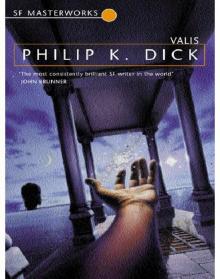 Valis
Valis The Simulacra
The Simulacra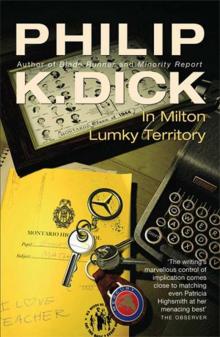 In Milton Lumky Territory
In Milton Lumky Territory Lies, Inc.
Lies, Inc. The Man Who Japed
The Man Who Japed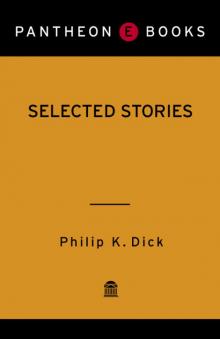 Selected Stories of Philip K. Dick
Selected Stories of Philip K. Dick Gather Yourselves Together
Gather Yourselves Together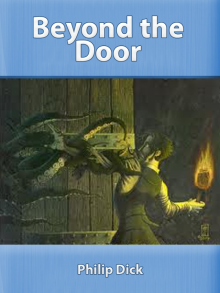 Beyond the Door
Beyond the Door Our Friends From Frolix 8
Our Friends From Frolix 8 Do Androids Dream of Electric Sheep?
Do Androids Dream of Electric Sheep? The Short Happy Life of the Brown Oxford and Other Classic Stories
The Short Happy Life of the Brown Oxford and Other Classic Stories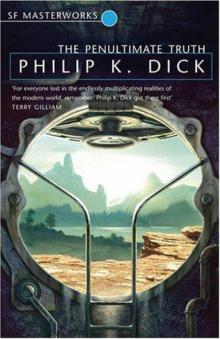 The Penultimate Truth
The Penultimate Truth Counter-Clock World
Counter-Clock World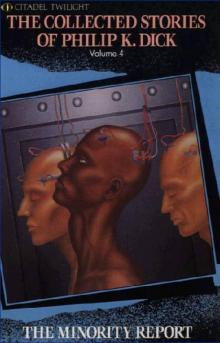 The Minority Report: 18 Classic Stories
The Minority Report: 18 Classic Stories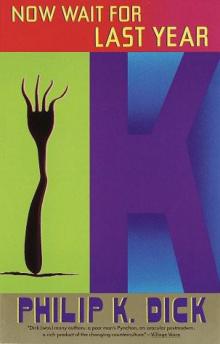 Now Wait for Last Year
Now Wait for Last Year The Broken Bubble
The Broken Bubble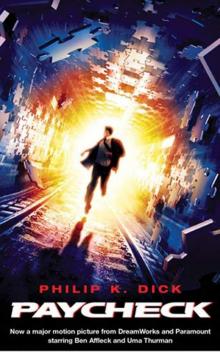 Paycheck
Paycheck Ubik
Ubik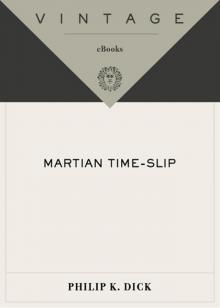 Martian Time-Slip
Martian Time-Slip The Shifting Realities of Philip K. Dick
The Shifting Realities of Philip K. Dick The Man Whose Teeth Were All Exactly Alike
The Man Whose Teeth Were All Exactly Alike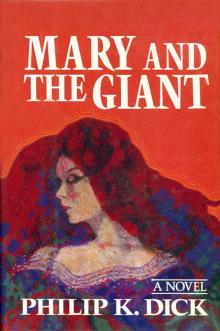 Mary and the Giant
Mary and the Giant The Man in the High Castle
The Man in the High Castle Puttering About in a Small Land
Puttering About in a Small Land Confessions of a Crap Artist
Confessions of a Crap Artist Mr. Spaceship by Philip K. Dick, Science Fiction, Fantasy, Adventure
Mr. Spaceship by Philip K. Dick, Science Fiction, Fantasy, Adventure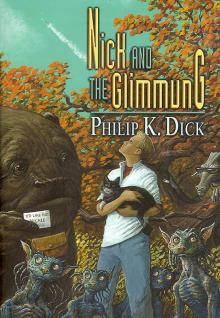 Nick and the Glimmung
Nick and the Glimmung Deus Irae
Deus Irae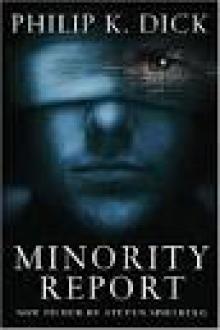 The Minority Report
The Minority Report The Hanging Stranger
The Hanging Stranger The Variable Man
The Variable Man Voices From the Street
Voices From the Street Second Variety and Other Stories
Second Variety and Other Stories A Scanner Darkly
A Scanner Darkly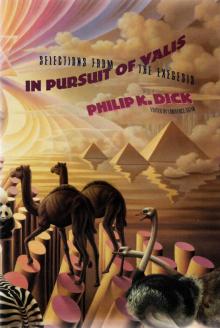 In Pursuit of Valis
In Pursuit of Valis The Three Stigmata of Palmer Eldritch
The Three Stigmata of Palmer Eldritch The Transmigration of Timothy Archer
The Transmigration of Timothy Archer The Crack in Space
The Crack in Space The Collected Stories of Philip K. Dick 3: Second Variety
The Collected Stories of Philip K. Dick 3: Second Variety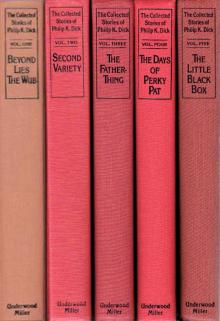 The Collected Stories of Philip K. Dick 4: The Minority Report
The Collected Stories of Philip K. Dick 4: The Minority Report The Skull
The Skull Solar Lottery
Solar Lottery Vulcan's Hammer
Vulcan's Hammer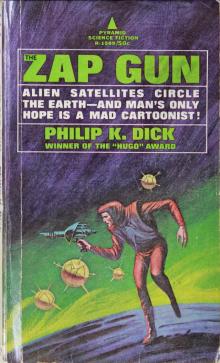 The Gun
The Gun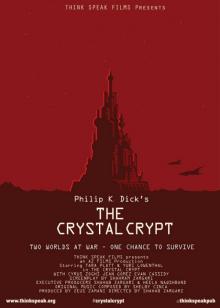 The Crystal Crypt
The Crystal Crypt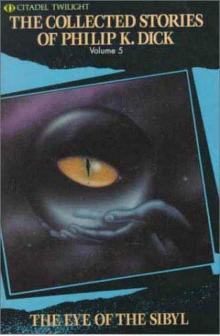 The Collected Stories of Philip K. Dick 5: The Eye of the Sibyl
The Collected Stories of Philip K. Dick 5: The Eye of the Sibyl Mr. Spaceship
Mr. Spaceship The Zap Gun
The Zap Gun Dr. Bloodmoney
Dr. Bloodmoney Beyond Lies the Wub
Beyond Lies the Wub Galactic Pot-Healer
Galactic Pot-Healer The Divine Invasion
The Divine Invasion Radio Free Albemuth
Radio Free Albemuth A Maze of Death
A Maze of Death The Ganymede Takeover
The Ganymede Takeover The Philip K. Dick Reader
The Philip K. Dick Reader The Exegesis of Philip K. Dick
The Exegesis of Philip K. Dick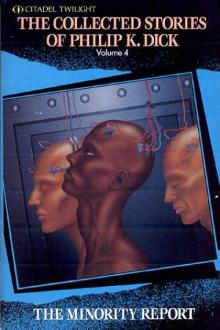 The Complete Stories of Philip K. Dick Vol. 4:
The Complete Stories of Philip K. Dick Vol. 4: Tony and the Beetles
Tony and the Beetles The Cosmic Puppets
The Cosmic Puppets The Complete Stories of Philip K. Dick Vol. 5: The Eye of the Sibyl and Other Classic Stories
The Complete Stories of Philip K. Dick Vol. 5: The Eye of the Sibyl and Other Classic Stories Clans of the Alphane Moon
Clans of the Alphane Moon Flow My Tears, the Policeman Said
Flow My Tears, the Policeman Said The World Jones Made
The World Jones Made Total Recall
Total Recall Eye in the Sky
Eye in the Sky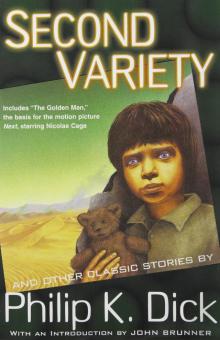 Second Variety
Second Variety Vintage PKD
Vintage PKD A Handful of Darkness
A Handful of Darkness Complete Stories 3 - Second Variety and Other Stories
Complete Stories 3 - Second Variety and Other Stories The Book of Philip K Dick
The Book of Philip K Dick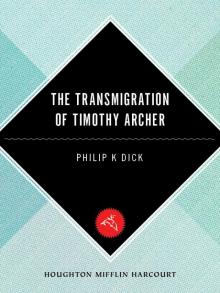 The Transmigration of Timothy Archer (Valis)
The Transmigration of Timothy Archer (Valis) Autofac
Autofac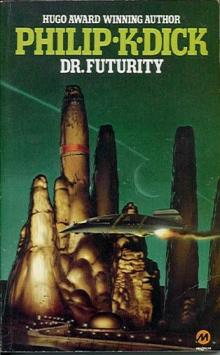 Dr. Futurity (1960)
Dr. Futurity (1960) Shell Game
Shell Game The Minority Report and Other Classic Stories
The Minority Report and Other Classic Stories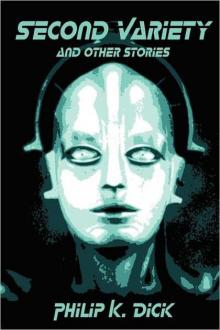 Collected Stories 2 - Second Variety and Other Classic Stories
Collected Stories 2 - Second Variety and Other Classic Stories The Third Time Travel
The Third Time Travel The Game-Players Of Titan
The Game-Players Of Titan World of Chance
World of Chance The Shifting Realities of PK Dick
The Shifting Realities of PK Dick Adjustment Team
Adjustment Team The Demon at Agi Bridge and Other Japanese Tales (Translations from the Asian Classics)
The Demon at Agi Bridge and Other Japanese Tales (Translations from the Asian Classics) Collected Stories 3 - The Father-Thing and Other Classic Stories
Collected Stories 3 - The Father-Thing and Other Classic Stories CANTATA-141
CANTATA-141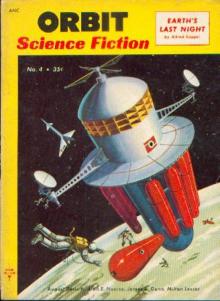 The Adjustment Team
The Adjustment Team The Collected Stories of Philip K Dick
The Collected Stories of Philip K Dick Electric Dreams
Electric Dreams Collected Stories 1 - The Short Happy Life of the Brown Oxford and Other Classic Stories
Collected Stories 1 - The Short Happy Life of the Brown Oxford and Other Classic Stories Eye in the Sky (1957)
Eye in the Sky (1957)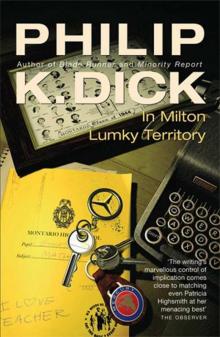 In Milton Lumky Territory (1984)
In Milton Lumky Territory (1984) The VALIS Trilogy
The VALIS Trilogy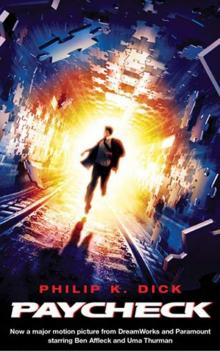 Paycheck (2003)
Paycheck (2003) The Unteleported Man
The Unteleported Man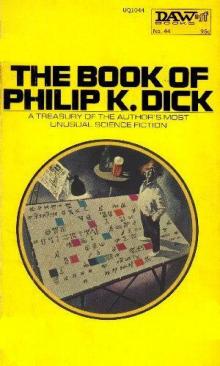 The Book of Philip K Dick (1973)
The Book of Philip K Dick (1973) Collected Stories 5 - The Eye of the Sibyl and Other Classic Strories
Collected Stories 5 - The Eye of the Sibyl and Other Classic Strories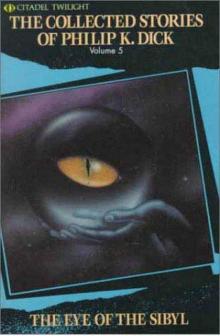 The Eye of the Sibyl and Other Classic Strories
The Eye of the Sibyl and Other Classic Strories The Crack in Space (1966)
The Crack in Space (1966)